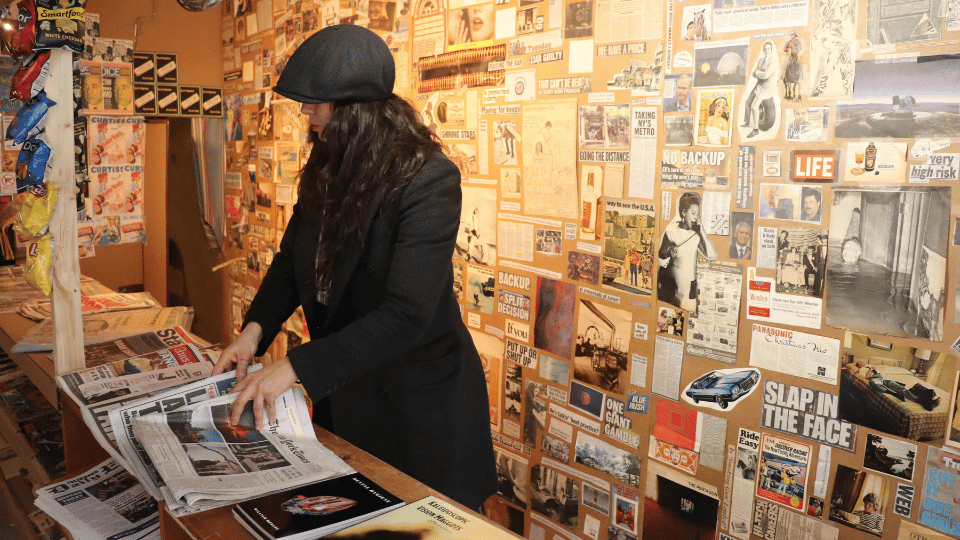Virtual Reality (VR) has revolutionized the way we interact with technology and content, offering immersive experiences that blur the line between the physical and digital worlds. As the demand for VR experiences continues to grow across various industries, mastering VR design principles is essential for creating captivating and engaging virtual environments.
In this article, we will delve into the key principles that designers need to consider when creating VR experiences that captivate and engage users.
Understand the User Experience
When designing VR experiences, it is crucial to prioritize the user experience. Consider how users will interact with the virtual environment and ensure that the design enhances their overall experience.
By understanding the needs and preferences of the target audience, designers can create intuitive and user-friendly VR experiences that keep users engaged.
Focus on Immersion
One of the primary goals of VR design is to create a sense of immersion that transports users to a virtual world. To achieve this, designers should pay attention to details such as realistic graphics, spatial audio, and interactive elements that enhance the feeling of presence. By focusing on creating a fully immersive experience, designers can captivate users and make the virtual world feel more lifelike.
Prioritize Performance
Optimizing performance is crucial for delivering a seamless VR experience. Designers should pay attention to factors such as frame rate, latency, and rendering quality to ensure that the virtual environment runs smoothly on various devices.
By prioritizing performance optimization, designers can prevent motion sickness and create a more comfortable experience for users.
Design for Interaction
Interactivity is a key aspect of VR design that enhances user engagement and immersion. Designers should incorporate interactive elements such as gestures, controllers, and haptic feedback to allow users to interact with the virtual environment.
By designing for interaction, designers can create dynamic and engaging VR experiences that encourage users to explore and engage with the virtual world.
Consider Accessibility
When designing VR experiences, it is essential to consider accessibility for all users. Designers should take into account factors such as user comfort, motion sickness prevention, and inclusive design principles to ensure that the virtual environment is accessible to everyone. By prioritizing accessibility, designers can create VR experiences that are enjoyable and inclusive for all users.
Test and Iterate
Testing and iteration are essential components of the VR design process. Designers should conduct user testing sessions to gather feedback and insights on the usability and effectiveness of the virtual environment.
By incorporating user feedback and iterating on the design, designers can refine the VR experience and ensure that it meets the needs and expectations of the target audience.
Stay Updated on Emerging Trends
The field of VR design is constantly evolving, with new technologies and trends shaping the future of virtual experiences. Designers should stay updated on emerging trends such as augmented reality (AR), mixed reality (MR), and spatial computing to stay ahead of the curve.
By staying informed and adapting to new technologies, designers can create innovative and cutting-edge VR experiences that push the boundaries of immersive design.
Collaborate with Experts
Collaboration is key to creating successful VR experiences. Designers should collaborate with experts in fields such as 3D modeling, animation, sound design, and user experience to leverage their expertise and create high-quality VR experiences.
By working with a multidisciplinary team, designers can bring diverse perspectives to the design process and create immersive VR experiences that resonate with users.
Hone Your Skills
Mastering VR design principles requires continuous learning and skill development. Designers should invest time in honing their skills in areas such as 3D modeling, animation, programming, and user experience design to create compelling and immersive VR experiences.
By staying curious and continuously improving their skills, designers can elevate their VR design capabilities and create experiences that captivate and engage users.
Explore Career Opportunities
As the demand for VR experiences continues to rise, there is a growing need for skilled VR designers across various industries. By mastering VR design principles and honing their skills, designers can explore exciting career opportunities in fields such as gaming, entertainment, education, healthcare, and more. Whether working for a VR studio, tech company, or freelance designer, mastering VR design principles can open doors to a rewarding and dynamic career in the immersive technology industry.
Conclusion
In this article, we have explored the key principles that designers need to consider when creating immersive VR experiences. By understanding the user experience, focusing on immersion, prioritizing performance, designing for interaction, considering accessibility, testing, and iterating, staying updated on emerging trends, collaborating with experts, honing their skills, and exploring career opportunities, designers can create captivating and engaging VR experiences that push the boundaries of immersive design.
Key Takeaways:
- Prioritize the user experience by understanding user needs and preferences to create engaging VR experiences.
- Focus on immersion through realistic graphics, spatial audio, and interactive elements to transport users to a virtual world.
- Optimize performance to ensure a seamless VR experience by paying attention to factors like frame rate and latency.
- Design for interaction by incorporating gestures, controllers, and haptic feedback to enhance user engagement.
- Consider accessibility for all users to create inclusive and enjoyable VR experiences.
- Conduct testing and iteration to refine the VR experience based on user feedback and improve usability.
- Stay updated on emerging trends in VR design, such as augmented reality and mixed reality, to stay innovative.
- Collaborate with experts in various fields to create high-quality and immersive VR experiences.
- Hone your skills in areas like 3D modeling, animation, and programming to create compelling VR experiences.
- Explore diverse career opportunities in gaming, entertainment, education, healthcare, and more by mastering VR design principles.
Consider taking the Yellowbrick online course and certificate program, “NYU Animation Industry Essentials,” to further enhance your skills and knowledge in VR design principles. This course can provide valuable insights and practical experience to help you succeed in the dynamic field of immersive technology.








